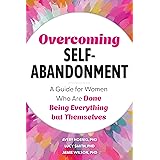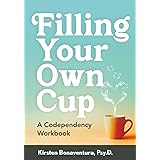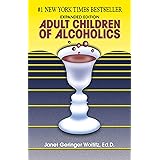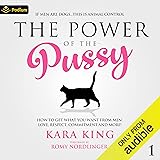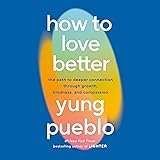The intricate dance between intense emotional connection and compulsive sexual behavior often leads to confusion, particularly when distinguishing between sex addiction vs. love addiction. As discussed in the insightful video featuring Brianne Davis and Dr. Drew, these complex conditions frequently intertwine, yet their core drivers and manifestations present distinct patterns. Understanding these differences is paramount for individuals seeking clarity on their own experiences or supporting loved ones navigating relational and sexual compulsions.
Many people mistakenly equate sex addiction with merely desiring frequent sexual encounters or dismiss love addiction as simply being “too romantic.” However, both conditions involve a deeply rooted psychological dependence, driven by an insatiable need to fill an internal void. The issue lies not in the desire for connection or intimacy itself, but in the compulsive, often destructive, patterns developed to achieve an elusive sense of fulfillment or control. This article aims to unpack these distinctions, providing a clearer lens through which to view these challenging relational dynamics.
Deconstructing Love Addiction: The Pursuit of “More”
Love addiction, as illuminated by Brianne Davis’s compelling narrative, primarily revolves around the intense pursuit of romance, fantasy, and the initial euphoric “high” of falling in love. This relational addiction is not about authentic, sustainable intimacy but rather the intoxicating feeling of being desired and the power dynamics inherent in new romantic entanglements. Individuals grappling with love addiction often describe an inner “hole,” an emotional deficit that compels them to constantly seek external validation and affection.
One crucial distinction is the focus on the *process* of falling in love and maintaining intense, often unstable, romantic situations. This pursuit is characterized by an insatiable need for “more”—more attention, more flirting, more intrigue, more idealization from a partner. The internal void, as Brianne describes it, is a pervasive sense of emptiness that nothing ever seems to fill completely, leading to a relentless cycle of seeking intense emotional stimulation. This dynamic often manifests as an inability to commit fully, always keeping “one foot out the door,” ready to move onto the next romantic target once the initial thrill dissipates, typically within a year to a year and a half, as Brianne experienced.
Another facet involves the underlying drive for power and control within relationships. For some, exerting influence over another person provides a temporary sense of stability or self-worth, masking profound insecurities. This control might manifest subtly, through manipulative behaviors, or more overtly, by orchestrating dramatic romantic scenarios. The objective is not necessarily sexual gratification but the emotional and psychological high derived from the chase, the conquest, and the perceived devotion of another, however fleeting it may be.
Recognizing the Emotional Landscape of Love Addiction
Individuals experiencing love addiction often develop a complex internal world dominated by fantasy and idealization. They might project idealized qualities onto new partners, becoming addicted to the imagined potential of a relationship rather than its reality. When the initial “honeymoon phase” inevitably wanes, the addict often becomes restless, disillusioned, and begins seeking a new source of romantic intensity.
This relentless cycle frequently leads to serial relationships, emotional infidelity, and a pattern of abandoning partners once the emotional “hit” diminishes. The constant need for romantic novelty, often behind a primary partner’s back, as Brianne candidly shared with her “showmances,” becomes a maladaptive coping mechanism. These behaviors are not necessarily driven by sexual desire alone, but by the craving for the emotional drama, the secrecy, and the feeling of being desirable and in demand.
Deciphering Sex Addiction: The Compulsive Pursuit of Physicality
In contrast, sex addiction typically focuses on the compulsive engagement in sexual behaviors, irrespective of emotional connection or relational commitment. While sex can be a component of love addiction, for the sex addict, the primary driver is the physical act and the dopamine surge associated with it. This addiction often involves a pattern of escalating sexual behaviors to achieve the desired psychological and physiological release.
The majority of sex addicts engage in a range of behaviors including compulsive pornography use, masturbation, anonymous sexual encounters, and one-night stands. The defining characteristic is the compulsive nature of these acts: they are performed despite negative consequences, a loss of control, and a pervasive sense of shame or guilt. The act of sex itself, or the behaviors leading up to it, provides a temporary escape from emotional pain, anxiety, or feelings of inadequacy.
A key differentiator is the emphasis on variety and intensity in sexual encounters, often involving multiple partners or a singular focus on physical release. Unlike love addiction, where the emotional attachment (or fantasy of it) is paramount, sex addiction prioritizes the physical act. The individual may feel disconnected from their partners during these encounters, viewing them as objects to fulfill a compulsive need rather than individuals with whom to share intimacy.
The Behavioral Patterns of Compulsive Sexual Behavior
Behavioral patterns associated with sex addiction often include secretiveness, lying, and leading a double life to conceal activities. This might involve extensive time spent on dating apps, cruising for anonymous sex, or engaging in affairs. The addict frequently experiences a significant preoccupation with sexual thoughts and fantasies, which can interfere with daily functioning and responsibilities.
The “disease of more” manifests here as a need for increasingly risky or varied sexual experiences to achieve the same level of gratification, much like other substance addictions. This escalation can lead to significant disruptions in personal relationships, career, and overall well-being. The consequences, though often severe, rarely deter the individual from continuing the compulsive behaviors without intervention, highlighting the profound grip of this addiction.
Distinguishing Features: Core Drivers and Manifestations
While both sex and love addiction can lead to destructive relationship patterns and profound personal distress, their primary psychological drivers and outward expressions offer critical points of differentiation. Understanding these nuances is vital for accurate identification and effective therapeutic interventions.
1. Emotional Connection Versus Physical Gratification
Love Addiction: The primary compulsion is the pursuit of romantic idealization, emotional intensity, and the intoxicating “high” of falling in love. The focus is on the fantasy of connection and the emotional validation derived from being desired. Sex may or may not be involved, but if it is, it serves to enhance the emotional bond or control dynamic.
Sex Addiction: The core compulsion is the pursuit of sexual acts and the physical gratification they provide. The emphasis is on the physical release and the temporary escape from internal discomfort. Emotional connection is often minimal or absent, and partners may be interchangeable or objectified to fulfill the sexual drive.
2. Relationship Focus and Commitment Styles
Love Addiction: Individuals often struggle with genuine intimacy and commitment once the initial romantic fervor fades. They may enter into serial relationships, maintain multiple emotional connections, or engage in “showmances” where intense but temporary bonds are formed. The fear of true commitment and vulnerability is a significant underlying factor.
Sex Addiction: While relationships can be impacted, the addiction itself doesn’t necessarily preclude commitment (though it often makes it difficult to maintain fidelity). The focus is on the sexual act, which may occur within or outside of committed relationships. The underlying issue is the compulsive sexual behavior, not the romantic attachment itself.
3. The Role of Power and Control
Love Addiction: As Brianne articulated, the desire for power and control over another person can be a central theme. This mechanism provides a temporary feeling of agency and self-worth, compensating for deep-seated insecurities. The addict manipulates situations to maintain a sense of superiority or desirability.
Sex Addiction: Power and control may play a role, but typically in the context of sexual dynamics rather than broad relational ones. For instance, some sex addicts might derive power from dominating sexual encounters, but this is secondary to the primary drive for sexual release.
Co-occurring Patterns and the Path to Recovery
It is important to acknowledge that many individuals experience a combination of both sex and love addiction, as Brianne herself recognized. These co-occurring disorders indicate a deeper pattern of relational and behavioral compulsivity, often rooted in early attachment wounds, trauma, or underlying mental health conditions like anxiety or depression. When both conditions are present, the individual cycles between intense romantic pursuit and compulsive sexual behaviors, each serving to distract from or numb internal pain.
Navigating these complex addictions requires specialized therapeutic intervention. Recovery involves addressing the underlying psychological drivers, developing healthy coping mechanisms, and learning to form secure, authentic attachments. Building self-awareness, establishing firm boundaries, and confronting patterns of deception are critical components of the healing journey. Professional guidance from therapists specializing in intimacy and relational disorders offers the most effective route to sustained recovery from both sex addiction and love addiction.



